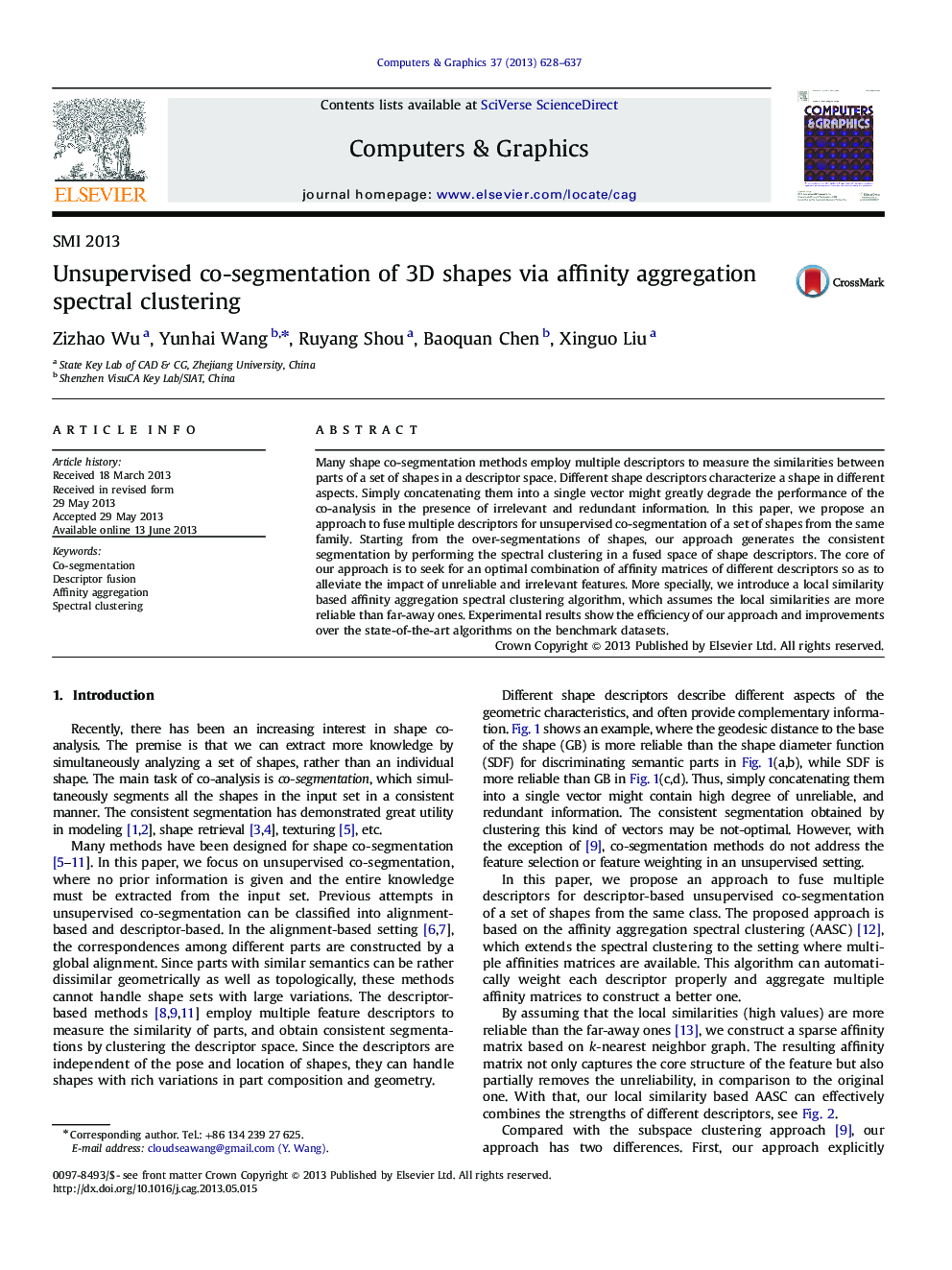| Article ID | Journal | Published Year | Pages | File Type |
|---|---|---|---|---|
| 441990 | Computers & Graphics | 2013 | 10 Pages |
•We presented a shape co-segmentation method by fusing multiple descriptors with affinity aggregation spectral clustering.•We showed that local similarity based affinity aggregation is more robust.•We demonstrated the effectiveness of our approach on several benchmark datasets.
Many shape co-segmentation methods employ multiple descriptors to measure the similarities between parts of a set of shapes in a descriptor space. Different shape descriptors characterize a shape in different aspects. Simply concatenating them into a single vector might greatly degrade the performance of the co-analysis in the presence of irrelevant and redundant information. In this paper, we propose an approach to fuse multiple descriptors for unsupervised co-segmentation of a set of shapes from the same family. Starting from the over-segmentations of shapes, our approach generates the consistent segmentation by performing the spectral clustering in a fused space of shape descriptors. The core of our approach is to seek for an optimal combination of affinity matrices of different descriptors so as to alleviate the impact of unreliable and irrelevant features. More specially, we introduce a local similarity based affinity aggregation spectral clustering algorithm, which assumes the local similarities are more reliable than far-away ones. Experimental results show the efficiency of our approach and improvements over the state-of-the-art algorithms on the benchmark datasets.
Graphical abstractOverview of the steps in our co-segmentation: (a) An over-segmentation is computed for each shape. (b,c,d) The 2D spectral spaces of affinity matrices based on the three computed descriptors, where each patch is corresponding to a point in such spaces. Three parts are mixed together in SDF and AGD spaces (b,d), while they fall in different ranges but not clearly separated in GB space. (f,g,h) Our fused space (f) with different weights for each descriptor (g), where the parts are clearly separated, resulting in the segmentation in (h). (e) In comparison, the 2D spectral space of the affinity matrix of the descriptor generated by concatenating three descriptors together, where the bottom and body of the lamp are mixed.Figure optionsDownload full-size imageDownload high-quality image (139 K)Download as PowerPoint slide
